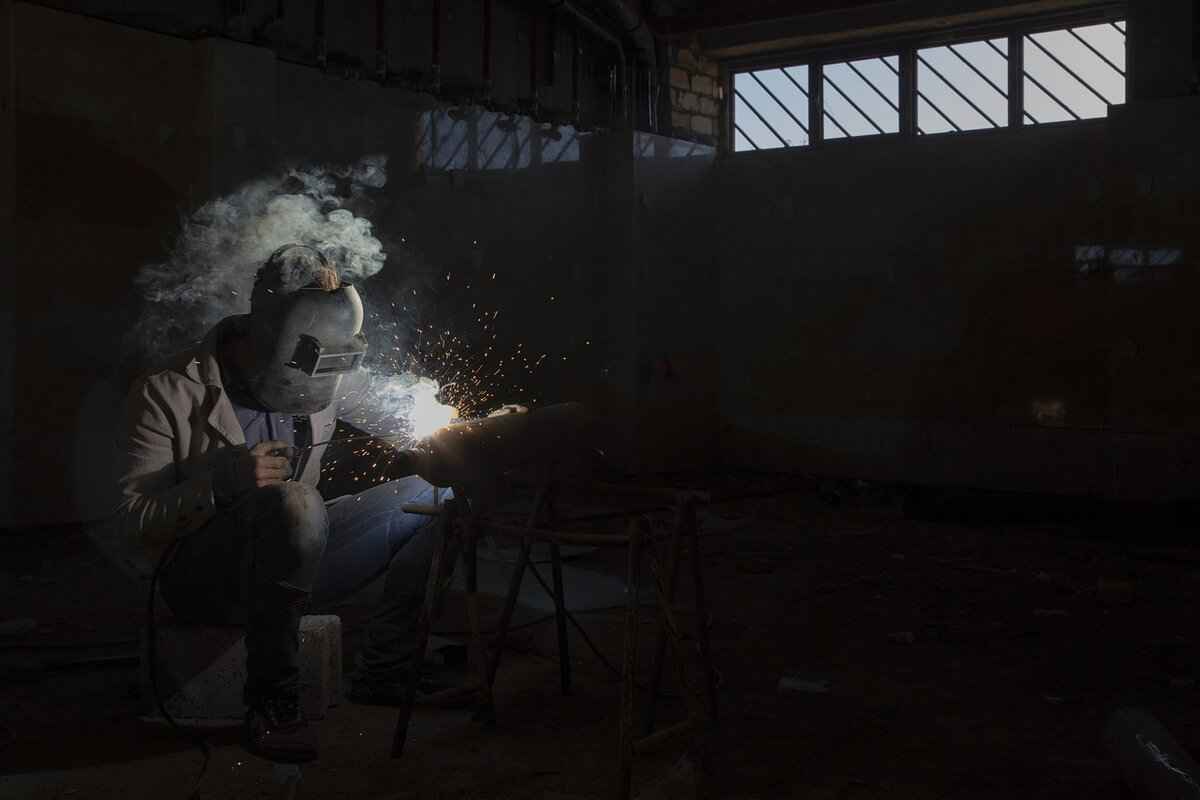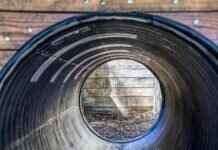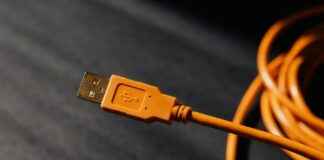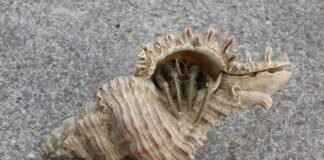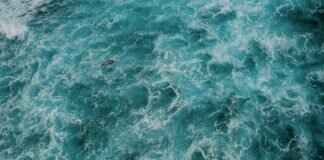When it comes to capturing stunning visuals with your GoPro Hero 12, ND filters are essential tools that can dramatically enhance your filming experience. These filters allow you to control light exposure and achieve that coveted cinematic look. In this guide, we will explore the types of ND filters available, how to use them effectively, and tips for elevating your footage to professional standards.
What are ND Filters and Why Use Them?
ND filters, or neutral density filters, are designed to reduce the amount of light entering your camera lens. By using these filters, you gain better control over exposure and can create beautiful motion blur, which is vital for achieving cinematic quality in your GoPro Hero 12 footage.
How Do ND Filters Work?
ND filters work by blocking a specific amount of light without altering the color of your images. This functionality allows you to shoot at optimal shutter speeds, resulting in smoother motion and a more professional appearance in your videos.
Types of ND Filters Available
- Fixed ND Filters: These come in specific strengths like ND4, ND8, and ND16, allowing you to pick the right level of light reduction for your shooting conditions.
- Variable ND Filters: These filters enable adjustable light reduction, providing flexibility for dynamic shooting environments where lighting conditions frequently change.
Choosing the Right ND Filter for GoPro Hero 12
Selecting the appropriate ND filter is crucial and depends on your filming environment and desired effects. Consider factors such as lighting conditions and your shooting style to make an informed choice.
Benefits of Using ND Filters for GoPro Hero 12
Utilizing ND filters can significantly enhance your footage. Here are some key benefits:
- Improved Image Quality: ND filters help maintain image clarity by preventing overexposure, ensuring that details in highlights and shadows are preserved.
- Creative Effects: With ND filters, you can achieve professional-looking effects, such as smooth motion blur in action shots, captivating your audience.
How to Use ND Filters with GoPro Hero 12
To maximize the benefits of ND filters, understanding their application in various shooting scenarios is essential. Here are some practical tips:
- Setting Up Your GoPro with ND Filters: Securely attach the filter, adjust your settings for optimal exposure, and test different filters to find the best match for your scene.
- Shooting Techniques with ND Filters: Experiment with adjusting shutter speed and aperture settings while using ND filters to achieve the desired cinematic effect.
Where to Buy Quality ND Filters for GoPro Hero 12
Finding high-quality ND filters is crucial for achieving the best results. Several online retailers and specialty camera stores offer a variety of options tailored for the GoPro Hero 12. Some reputable brands include:
- PolarPro: Known for their durable and effective ND filters designed specifically for action cameras.
- Tiffen: Offers a range of high-quality filters that enhance your filming experience.
Price Range for ND Filters
ND filters vary in price depending on the brand and type. Understanding the price range can help you make informed decisions while considering your budget and filming needs. Generally, you can find quality ND filters starting from around $20, with premium options reaching upwards of $100.
By incorporating ND filters into your GoPro Hero 12 setup, you can unlock new creative possibilities and elevate your filming to a whole new level. With the right knowledge and tools, achieving cinematic footage is within your reach.

What are ND Filters and Why Use Them?
Neutral Density (ND) filters are essential tools for photographers and videographers looking to enhance their creative capabilities. By reducing the amount of light that enters the lens, these filters allow for greater control over exposure and motion blur, making them invaluable for achieving cinematic quality in your GoPro Hero 12 footage. In this section, we will explore the importance of ND filters, their functionality, and how they can elevate your filming experience.
ND filters serve a pivotal role in video production, particularly when shooting in bright environments. They are designed to block a specific amount of light from reaching the camera sensor, enabling filmmakers to maintain optimal shutter speeds and aperture settings. This is crucial for creating the desired motion blur effect, which contributes to the cinematic feel of the footage.
When filming with your GoPro Hero 12, you may encounter situations where the lighting is too harsh. In such cases, ND filters can help you avoid overexposed images, preserving the details in both highlights and shadows. This is especially important when capturing fast-moving subjects or when trying to achieve a specific artistic effect.
ND filters function by reducing the intensity of light that enters the lens without altering the color of the scene. This allows you to shoot at slower shutter speeds, which is essential for creating that smooth, fluid motion characteristic of high-quality video. For instance, if you’re filming in bright sunlight, using an ND filter can help you maintain a shutter speed that is twice the frame rate, a common rule in cinematic video production.
The GoPro Hero 12 is equipped with advanced imaging technology, but even the best cameras can struggle in bright conditions. By using ND filters, you can significantly enhance the quality of your footage. Here are a few key reasons why you should consider incorporating ND filters into your filming toolkit:
- Enhanced Control: ND filters provide better control over exposure, allowing you to achieve the perfect balance in your shots.
- Creative Flexibility: They enable creative effects, such as motion blur and depth of field, which are vital for cinematic storytelling.
- Improved Image Quality: By preventing overexposure, ND filters help maintain the integrity of your footage, ensuring that details are captured accurately.
There are various types of ND filters to choose from, each serving different purposes:
- Fixed ND Filters: These come in specific strengths, such as ND4, ND8, and ND16, allowing you to select the right level of light reduction for your shooting conditions.
- Variable ND Filters: These filters offer adjustable light reduction, making them ideal for dynamic shooting environments where lighting conditions frequently change.
Understanding these options will help you choose the right filter for your GoPro Hero 12, ensuring you get the best results in every shooting scenario.
In summary, ND filters are a vital accessory for anyone serious about capturing stunning footage with their GoPro Hero 12. By reducing light intake, they allow for greater creative control and improved image quality, making it easier to achieve that cinematic look. Whether you’re a professional filmmaker or an enthusiastic hobbyist, investing in a quality ND filter can significantly enhance your filming experience.

How Do ND Filters Work?
Understanding the functionality of ND filters is essential for anyone looking to enhance their videography skills, especially when using the GoPro Hero 12. ND filters, or Neutral Density filters, play a pivotal role in controlling the light that enters your camera lens. By doing so, they allow you to maintain optimal exposure settings without compromising the color balance of your footage.
ND filters are specialized optical filters that reduce the intensity of light entering the lens. This reduction in light allows filmmakers to achieve specific effects that are crucial for high-quality video production. By blocking excessive light, ND filters enable you to use wider apertures and slower shutter speeds, which are essential for creating that coveted cinematic look.
Understanding the mechanics of ND filters is crucial. They function by blocking light without affecting color, enabling you to shoot at optimal shutter speeds for smoother motion in your videos. The primary benefit of using ND filters is their ability to mimic the effects of shooting in low-light conditions, even in bright environments. This means you can achieve a natural motion blur that is often lost when shooting at high shutter speeds.
When filming with the GoPro Hero 12, the use of ND filters becomes even more significant. Action cameras are designed to capture fast-paced movements, and without ND filters, you may end up with footage that appears choppy or overly sharp. By employing ND filters, you can create a more fluid and professional look in your videos.
- Improved Exposure Control: ND filters allow for greater flexibility in exposure settings, enabling you to shoot in bright conditions without overexposing your footage.
- Enhanced Motion Blur: Shooting at lower shutter speeds creates a natural motion blur, which is essential for conveying movement and action.
- Creative Freedom: With ND filters, you can experiment with different depths of field, allowing for more creative compositions in your shots.
When selecting an ND filter for your GoPro Hero 12, consider the following factors:
- Lighting Conditions: Assess the lighting conditions you will be shooting in. A stronger ND filter may be necessary for bright outdoor settings.
- Desired Effects: Think about the type of footage you want to create. For instance, if you want to achieve a dreamy, blurred background, a stronger ND filter is advisable.
- Filter Type: Choose between fixed ND filters, which come in specific strengths, or variable ND filters, which allow for adjustable light reduction.
To maximize the benefits of ND filters, follow these practical tips:
- Experiment: Try different ND filters to see which works best for your shooting style and environment.
- Adjust Camera Settings: Always adjust your shutter speed and aperture when using ND filters to maintain the desired exposure.
- Check for Vignetting: Ensure that your ND filter does not cause vignetting, which can darken the corners of your footage.
In summary, understanding how ND filters work and their importance in videography is crucial for capturing high-quality footage with your GoPro Hero 12. By utilizing these filters effectively, you can enhance your filming experience and produce stunning, cinematic videos.
Types of ND Filters Available
When it comes to capturing stunning footage with your GoPro Hero 12, understanding the is essential. These filters not only enhance your filming capabilities but also allow for creative expression in various lighting conditions. Below, we delve into the three primary types of ND filters: fixed, variable, and graduated, each catering to different filming needs.
Fixed ND filters are designed to reduce light by a specific amount, such as ND4, ND8, or ND16. These filters are ideal for consistent lighting conditions, allowing you to select the precise level of light reduction that suits your shooting environment. For instance, an ND8 filter reduces light by three stops, making it perfect for bright sunny days. This type of filter is particularly useful for achieving motion blur in fast-moving scenes, ensuring that your footage maintains a cinematic quality.
Variable ND filters offer the flexibility of adjustable light reduction, allowing you to fine-tune exposure on the fly. This adaptability is especially beneficial in dynamic shooting environments where lighting can change rapidly, such as during sunset or in fluctuating indoor lighting. With a simple twist, you can adjust the filter’s density, providing a versatile solution for filmmakers who require quick adjustments without the need to swap filters constantly. This type is excellent for achieving smooth transitions in exposure, making it a favorite among professional videographers.
Graduated ND filters, or GND filters, feature a gradient that transitions from dark to clear. These filters are particularly useful for landscape photography and videography, where the sky is significantly brighter than the foreground. By placing the darker portion of the filter over the sky, you can balance the exposure, preventing overexposure in the bright areas while maintaining detail in the shadows. This technique is crucial for achieving well-exposed and visually appealing shots, especially during sunrise or sunset.
When selecting an ND filter for your GoPro Hero 12, consider your shooting conditions, desired effects, and personal preferences. For instance, if you’re filming in bright daylight and want to create a soft motion blur, a fixed ND filter may be your best choice. Conversely, if you anticipate varying light conditions, a variable ND filter will provide the necessary flexibility. Graduated ND filters are ideal for landscape shots where you need to manage exposure differences between the sky and the ground.
- Improved Image Quality: ND filters help maintain image clarity by preventing overexposure, ensuring details are preserved in both highlights and shadows.
- Creative Control: They allow for artistic effects such as motion blur, depth of field, and enhanced color saturation, which can elevate the overall aesthetic of your footage.
- Versatile Shooting: With different types of ND filters, you can adapt to various lighting conditions, making your GoPro Hero 12 a versatile tool for any filmmaker.
In conclusion, understanding the types of ND filters available for your GoPro Hero 12 can significantly enhance your filming experience. By selecting the right filter based on your shooting conditions and creative goals, you can elevate the quality of your footage and achieve professional results.
Fixed ND Filters
Fixed ND filters are essential tools for filmmakers and photographers, particularly for those using the GoPro Hero 12. These filters come in specific strengths, such as ND4, ND8, and ND16, allowing you to select the appropriate level of light reduction based on your shooting conditions. Understanding the strengths of these filters can greatly enhance your filming experience.
Fixed ND filters are optical devices designed to reduce the intensity of light entering the camera lens without altering the color of the scene. This capability is crucial for maintaining proper exposure, especially in bright lighting conditions. By using fixed ND filters, you can achieve the desired motion blur and depth of field effects that are characteristic of cinematic footage.
Fixed ND filters provide a consistent level of light reduction, which is ideal for specific shooting scenarios. For instance, if you’re shooting in bright sunlight, an ND16 filter will significantly lower the light intake, allowing for smoother motion and more creative control over your shots. This predictability makes fixed ND filters a favorite among professionals.
- ND4: Reduces light by 2 stops, suitable for slightly overcast days or shaded areas.
- ND8: Reduces light by 3 stops, perfect for sunny days when you want to maintain a wider aperture.
- ND16: Reduces light by 4 stops, ideal for bright sunlight and achieving significant motion blur.
Choosing the right fixed ND filter involves considering your filming environment and creative intentions. For example, if you plan to shoot a fast-paced action scene in bright sunlight, an ND16 filter would be more appropriate. Conversely, for a more subdued scene, an ND4 filter may suffice. Always evaluate the lighting conditions and desired effects before making a selection.
Incorporating fixed ND filters into your GoPro Hero 12 setup can yield numerous benefits:
- Enhanced Control: With fixed ND filters, you gain better control over exposure settings, allowing for more artistic freedom.
- Cinematic Quality: These filters help achieve the smooth motion blur that is essential for cinematic storytelling.
- Improved Image Quality: By preventing overexposure, fixed ND filters help maintain detail in both highlights and shadows.
To maximize the benefits of fixed ND filters, consider the following tips:
- Experiment: Try different strengths in varying lighting conditions to see how they affect your footage.
- Adjust Settings: Pair your ND filter with appropriate shutter speed and aperture settings for optimal results.
- Plan Your Shots: Think ahead about the scenes you want to capture, as this will influence your choice of filter.
Quality fixed ND filters can be found at various online retailers and specialty camera stores. Brands like PolarPro and Tiffen are renowned for their high-quality filters tailored for action cameras. Investing in reputable brands ensures durability and performance, which are crucial for achieving the best cinematic results.
In conclusion, fixed ND filters are indispensable for anyone looking to enhance their GoPro Hero 12 footage. By understanding their strengths and applications, you can elevate your filming experience and achieve stunning visual results.
Variable ND Filters
When it comes to capturing stunning visuals with your GoPro Hero 12, are a game-changer. These filters allow for adjustable light reduction, making them perfect for dynamically changing lighting conditions. Whether you’re shooting on a bright sunny day or in the golden hour, having the flexibility to control exposure is essential for achieving that cinematic look.
Unlike fixed ND filters that come in specific strengths, variable ND filters offer a range of light reduction capabilities. This means you can easily adjust the filter strength to match your shooting environment without the need to swap out filters constantly. This adaptability is particularly useful in environments where light levels fluctuate, such as during a sunset or when moving from shaded areas to bright sunlight.
- Enhanced Exposure Control: With variable ND filters, you can easily dial in the perfect exposure, allowing for better control over highlights and shadows.
- Creative Freedom: These filters enable you to use slower shutter speeds without overexposing your footage, allowing for beautiful motion blur effects that add a professional touch.
- Simplified Shooting Process: Instead of carrying multiple filters, a variable ND filter simplifies your gear, making it easier to adapt to changing conditions.
To maximize the benefits of variable ND filters, it’s important to understand how to use them properly with your GoPro Hero 12. Here are some practical tips:
- Attach Securely: Ensure that the variable ND filter is securely attached to your GoPro lens to avoid any unwanted light leaks.
- Adjust Gradually: When adjusting the filter, make small changes and monitor the exposure through your camera’s display to find the ideal setting.
- Experiment: Don’t hesitate to experiment with different settings in various lighting conditions. This practice will help you understand how the filter affects your footage.
While variable ND filters are incredibly useful, there are some common pitfalls to avoid:
- Over-tightening: Avoid over-tightening the filter on the lens, as this can lead to damage or difficulty removing it later.
- Neglecting to Check for Vignetting: At wider angles, some variable ND filters may cause vignetting. Always check your footage to ensure you’re not losing corners of your image.
- Ignoring Shutter Speed: Remember to adjust your shutter speed in accordance with the filter setting to maintain optimal motion blur.
When selecting a variable ND filter, consider factors such as build quality, optical clarity, and price. High-quality filters will not only provide better light management but also ensure that your footage remains sharp and free from color casts. Brands like PolarPro and Tiffen are renowned for their reliable variable ND filters tailored for action cameras.
Choosing the Right ND Filter for GoPro Hero 12
is a crucial step in ensuring you capture stunning cinematic footage. The right filter can enhance your filming experience, allowing you to achieve the desired effects while adapting to varying lighting conditions. This guide will help you navigate the selection process effectively.
When it comes to selecting an ND filter, consider the following factors:
- Filming Environment: Different environments present unique lighting challenges. For instance, bright sunny days require stronger ND filters to prevent overexposure, while overcast days may necessitate lighter filters.
- Desired Effects: Think about the visual style you want to achieve. If you’re aiming for smooth motion blur in action shots, a higher ND value will allow you to use slower shutter speeds.
- Personal Preferences: Your shooting style and comfort level with different filters will influence your choice. Some filmmakers prefer fixed ND filters for simplicity, while others might opt for variable ND filters for versatility.
Understanding lighting conditions is essential. For example, if you’re filming in bright daylight, an ND16 or ND32 filter might be suitable to reduce glare and maintain color fidelity. Conversely, in dimmer settings, a lighter ND filter, like ND4, may be sufficient to achieve the desired exposure without sacrificing image quality.
Additionally, consider your shooting style. If you frequently switch between indoor and outdoor filming, a variable ND filter can provide the flexibility needed to adapt to changing light conditions. This adaptability is particularly beneficial for action shots where lighting can shift rapidly.
Another critical aspect to consider is the filter’s quality. High-quality ND filters, such as those from reputable brands like PolarPro or Tiffen, are designed to minimize color distortion and maintain sharpness in your footage. Investing in a quality filter ensures that you achieve the best possible results, regardless of your filming environment.
Lastly, don’t forget to experiment with different filters and settings. Testing various combinations can help you discover what works best for your unique style and the specific scenes you are capturing. For instance, you might find that a variable ND filter allows for more creative freedom, enabling you to adjust on the fly without changing filters constantly.
In summary, selecting the right ND filter for your GoPro Hero 12 is about balancing your filming environment, desired effects, and personal preferences. By understanding the nuances of lighting conditions and your shooting style, you can make an informed decision that enhances your filming experience and elevates the quality of your footage.

Benefits of Using ND Filters for GoPro Hero 12
When it comes to capturing stunning footage with your GoPro Hero 12, utilizing ND filters can significantly enhance the overall quality of your videos. These filters are essential tools for filmmakers and enthusiasts alike, providing various benefits that can elevate your content to a more cinematic level.
- Improved Image Quality: ND filters help maintain optimal image quality by reducing the amount of light entering the lens. This prevents overexposure, ensuring that your footage retains crucial details in both highlights and shadows, which is vital for achieving that professional look.
- Reduced Glare: Shooting in bright conditions can often lead to unwanted glare and reflections. ND filters effectively minimize these issues, allowing for clearer, more vibrant images.
- Enhanced Creative Effects: One of the most exciting advantages of using ND filters is the ability to create stunning visual effects. For instance, they enable smooth motion blur in action scenes, which can give your footage a more dynamic and engaging feel.
- Control Over Exposure: ND filters allow for greater control over exposure settings. By reducing light intake, you can shoot at slower shutter speeds without overexposing the image, which is essential for achieving cinematic motion blur.
- Depth of Field Manipulation: Using ND filters helps in achieving a shallower depth of field, which can add a professional touch to your videos. This effect blurs the background and draws attention to the subject, enhancing the storytelling aspect of your footage.
Understanding how ND filters work is crucial for maximizing their benefits. By blocking varying amounts of light without altering color balance, ND filters allow you to shoot at ideal shutter speeds that contribute to smoother motion in your videos. This is particularly important when filming fast-moving subjects or in bright sunlight.
When selecting ND filters, you will encounter different types, including:
- Fixed ND Filters: These filters come in specific strengths (e.g., ND4, ND8, ND16), each designed to block a certain amount of light. They are suitable for consistent lighting conditions.
- Variable ND Filters: These filters offer adjustable light reduction, making them ideal for changing lighting scenarios. They provide flexibility, allowing you to adapt to various environments without needing to switch filters constantly.
- Graduated ND Filters: These are designed to reduce light in specific areas of the frame, which can be particularly useful for landscape photography where the sky may be significantly brighter than the foreground.
Selecting the appropriate ND filter for your GoPro Hero 12 involves considering several factors:
- Filming Environment: Assess the lighting conditions you’ll be shooting in. Bright sunlight may require stronger ND filters, while overcast days might need lighter options.
- Desired Effects: Think about the visual effects you want to achieve. If you’re aiming for motion blur, a stronger ND filter may be necessary.
- Personal Preferences: Your shooting style and preferences will also play a role in your choice. Experimenting with different filters can help you find what works best for your creative vision.
In conclusion, utilizing ND filters with your GoPro Hero 12 not only enhances the image quality but also opens up a world of creative possibilities. By understanding the benefits and types of ND filters available, you can significantly improve your filming experience and achieve stunning cinematic footage.
Improved Image Quality
When it comes to capturing stunning visuals with your GoPro Hero 12, ND filters play a pivotal role in enhancing image quality. These filters are essential tools for filmmakers and content creators who seek to achieve a professional look in their footage. By controlling the amount of light that enters the camera lens, ND filters help prevent overexposure, allowing for a greater range of detail in both highlights and shadows.
One of the primary reasons to use ND filters is their ability to maintain optimal exposure levels. Overexposure can lead to loss of detail in bright areas, resulting in washed-out images that fail to captivate the audience. With ND filters, you can ensure that your footage remains rich and vibrant, showcasing the full spectrum of colors and textures.
ND filters not only prevent overexposure but also allow you to shoot at slower shutter speeds. This is crucial for achieving that cinematic motion blur effect, which adds a layer of professionalism to your videos. By using an ND filter, you can create smooth transitions and fluid motion that draws viewers into the action. This technique is particularly beneficial when filming fast-paced scenes or dynamic movements.
- Fixed ND Filters: These filters come in specific strengths, such as ND4, ND8, and ND16, offering precise control over light reduction.
- Variable ND Filters: These filters provide adjustable light reduction, allowing you to fine-tune exposure on the fly, which is especially useful in changing lighting conditions.
Selecting the ideal ND filter involves understanding your shooting environment and the effects you wish to achieve. Consider factors such as:
- The intensity of light in your shooting location.
- The desired shutter speed for your footage.
- Your personal filming style and preferences.
To maximize the benefits of ND filters, follow these practical tips:
- Attach the filter securely to your GoPro Hero 12 to avoid any light leaks.
- Adjust your settings accordingly to match the filter’s strength, ensuring optimal exposure.
- Experiment with different filters to see which one best suits your shooting conditions.
Incorporating ND filters into your GoPro Hero 12 filming toolkit is essential for achieving high-quality visuals. These filters not only enhance image quality by preventing overexposure but also allow for creative effects that can elevate your footage to a cinematic level. By understanding the different types of ND filters and how to use them effectively, you can take your filmmaking skills to new heights.
Creative Effects with ND Filters
When it comes to capturing stunning visuals with your GoPro Hero 12, ND filters play a pivotal role in enhancing the quality of your footage. One of the most exciting aspects of using ND filters is their ability to facilitate creative effects that elevate your filming to a professional level. In this section, we will explore how ND filters can help you achieve smooth motion blur in your action shots, resulting in captivating visuals that engage your audience.
ND filters are not just tools for controlling light; they are gateways to artistic expression. By reducing the amount of light entering the lens, ND filters allow filmmakers to use slower shutter speeds without overexposing their footage. This is particularly beneficial for action shots where you want to convey a sense of movement. The result? A beautifully smooth motion blur that adds a dynamic quality to your videos.
Motion blur is a technique that mimics the way our eyes perceive movement, creating a sense of speed and fluidity. When using an ND filter, you can maintain the ideal shutter speed for your shooting conditions. For instance, in bright daylight, a faster shutter speed might make your footage appear choppy, detracting from the overall cinematic feel. By employing an ND filter, you can slow down the shutter speed, allowing for that sought-after motion blur effect.
- Action Sports: Capture the thrill of surfing, biking, or skiing with smooth motion blur that showcases the speed and excitement of the sport.
- Nature and Wildlife: Use ND filters to create soft, flowing motion in waterfalls or rivers, enhancing the serene beauty of natural landscapes.
- Time-Lapse Photography: Combine ND filters with time-lapse techniques to create stunning sequences that showcase the passage of time in a visually engaging manner.
To maximize the creative potential of ND filters, consider the following tips:
- Experiment with Different Strengths: Try various ND filter strengths (e.g., ND4, ND8, ND16) to see how they affect your footage.
- Adjust Your Settings: Don’t forget to adjust your aperture and ISO settings in conjunction with the ND filter to achieve optimal exposure.
- Practice Panning Techniques: Smooth panning while filming can enhance the motion blur effect, making your footage more visually appealing.
While ND filters can significantly improve your footage, there are common pitfalls to avoid:
- Overusing ND Filters: Using an ND filter in low-light conditions can lead to underexposed footage. Always assess your lighting environment.
- Neglecting Focus: Ensure your focus is sharp before applying the ND filter, as it can darken the image, making it harder to see your subject.
Incorporating ND filters into your GoPro Hero 12 filming toolkit opens up a world of creative possibilities. By mastering the use of these filters, you can achieve stunning motion blur effects that not only enhance the visual appeal of your footage but also captivate your viewers. So grab your ND filters and start experimenting to take your filmmaking skills to new heights!

How to Use ND Filters with GoPro Hero 12
When it comes to capturing stunning footage with your GoPro Hero 12, understanding how to effectively use ND filters is crucial. These filters can transform your shooting experience, enhancing both the quality and creativity of your videos. In this section, we will explore the best practices for using ND filters, ensuring you achieve cinematic results every time you hit record.
ND filters are essential tools for filmmakers, especially in bright environments. They work by reducing the amount of light that enters the camera, allowing you to maintain optimal shutter speeds and create beautiful motion blur. This is particularly important for action shots or scenes where you want to convey a sense of movement.
To get started, you must securely attach the ND filter to your GoPro Hero 12. Follow these steps:
- Choose the Right Filter: Select an ND filter based on your shooting environment. For bright sunny days, a stronger ND filter (like ND16) may be necessary.
- Attach the Filter: Ensure the filter fits snugly on the lens to avoid any light leaks.
- Adjust Settings: Set your GoPro to manual mode. Adjust the shutter speed to match the frame rate you are using (generally, double the frame rate for optimal motion blur).
Once your ND filter is in place, consider these shooting techniques to maximize its benefits:
- Experiment with Shutter Speed: A good rule of thumb is to set your shutter speed to double your frame rate. For instance, if shooting at 60fps, set your shutter speed to 1/120s.
- Utilize Aperture Settings: If your GoPro allows for aperture adjustments, experiment with wider apertures to achieve a shallow depth of field, making your subjects pop against the background.
- Monitor Exposure: Keep an eye on your exposure levels using the GoPro’s display. Adjust the ND filter strength as needed to avoid overexposure.
Understanding when to use ND filters can significantly enhance your footage:
- Bright Sunny Days: ND filters are invaluable when shooting in bright conditions, allowing you to maintain a cinematic look.
- Water and Reflections: When filming near water, ND filters can help reduce glare, resulting in clearer images.
- Low Light Conditions: In low light, you may need to switch to a lower ND filter or remove it entirely to allow more light in.
To truly master the use of ND filters with your GoPro Hero 12, consider these practical tips:
- Practice Regularly: The more you use ND filters, the more intuitive your settings will become. Experiment with different filters and scenarios.
- Review Your Footage: Always review your footage to see how the ND filter affected your shots. This will help you make better decisions in the future.
- Consult Online Resources: There are numerous tutorials and forums where filmmakers share their experiences and tips on using ND filters.
By understanding how to use ND filters effectively with your GoPro Hero 12, you can elevate your filming to new heights. Whether you are capturing action sports, scenic landscapes, or creative projects, these filters will help you achieve the cinematic quality you desire.
Setting Up Your GoPro with ND Filters
Setting up your GoPro Hero 12 with ND filters is an essential step for achieving cinematic footage and enhancing your overall filming experience. ND filters, or neutral density filters, are designed to reduce the amount of light that enters the camera lens without altering the color of the scene. This allows for greater control over exposure and motion blur, which is crucial for capturing high-quality video. Below are some practical steps and tips to effectively set up your GoPro Hero 12 with ND filters.
Before you start filming, it is vital to attach the ND filter securely to your GoPro Hero 12. Most ND filters come with a mounting system that fits snugly onto the camera lens. Ensure that the filter is clean and free from dust or fingerprints to avoid any unwanted artifacts in your footage. A well-attached filter will not only improve your image quality but also prevent any accidental detachment during filming.
Once the filter is securely in place, the next step is to adjust your camera settings. Depending on the strength of the ND filter you are using, you may need to modify your shutter speed and ISO settings. A general rule of thumb is to set your shutter speed to double the frame rate you are shooting at. For instance, if you are filming at 30 frames per second, your shutter speed should be around 1/60 seconds. This will help achieve that smooth motion blur that is characteristic of cinematic footage.
Experimentation is key when it comes to using ND filters. Different lighting conditions and shooting environments may require different filters. Start by testing a range of filters, such as ND4, ND8, and ND16, to see which one best suits your scene. Utilize the GoPro’s preview feature to assess how each filter affects your footage. This will help you determine the best filter for the specific lighting conditions you are working with.
While shooting, pay close attention to the changes in image quality as you switch between filters. Look for improvements in color saturation, contrast, and overall clarity. ND filters not only reduce glare but also help maintain detail in both highlights and shadows, which is crucial for achieving that professional look in your videos.
Finally, practice using ND filters in various shooting scenarios. Whether you are filming in bright sunlight or during golden hour, getting comfortable with your settings and understanding how each filter impacts your footage will significantly improve your skills as a filmmaker. Over time, you’ll develop a sense of when to use specific filters for optimal results.
By following these steps, you can effectively set up your GoPro Hero 12 with ND filters, ensuring that you capture stunning, cinematic footage every time. Remember that the key to mastering ND filters lies in understanding their function and experimenting with them in different environments. Happy filming!
Shooting Techniques with ND Filters
When it comes to capturing stunning footage with your GoPro Hero 12, employing the right shooting techniques is essential. One of the most effective methods is utilizing ND filters, which can significantly enhance the quality of your videos. In this section, we will delve into various techniques that can help you achieve that coveted cinematic effect.
Before diving into shooting techniques, it’s crucial to understand the roles of shutter speed and aperture settings in video production. Shutter speed controls the amount of motion blur in your footage, while aperture affects the depth of field. By adjusting these settings appropriately, you can create a more dynamic and visually appealing video.
To achieve a cinematic look, it’s often recommended to set your shutter speed to double the frame rate. For example, if you are shooting at 24 frames per second, your shutter speed should be around 1/50 seconds. This technique helps create natural motion blur, making the footage appear smoother and more professional.
ND filters are particularly useful in bright lighting conditions. They reduce the amount of light entering the lens, allowing you to maintain your desired shutter speed without overexposing the image. For instance, if you’re filming on a sunny day, using an ND8 or ND16 filter can help you achieve the right exposure while keeping your shutter speed consistent.
Another effective technique is to combine ND filters with aperture adjustments. By using a wider aperture (like f/2.8), you can create a shallow depth of field, which blurs the background and emphasizes the subject. This combination allows for creative storytelling, drawing viewers’ attention to the focal point of your footage.
Different shooting scenarios may require different ND filter strengths. For instance, in overcast conditions, a lighter ND filter may suffice, while bright, sunny days may necessitate a stronger filter. Experimenting with various strengths can help you find the perfect balance between exposure and creativity.
Variable ND filters offer the flexibility of adjusting the level of light reduction on the go. This is particularly beneficial in dynamic shooting environments where lighting conditions change rapidly. By simply rotating the filter, you can adapt to shifting light without interrupting your filming process.
- Always test your settings: Before starting your shoot, take a few test shots to ensure your settings are correct.
- Use a tripod: For the best results, especially with longer exposures, using a tripod can help stabilize your shots.
- Monitor your exposure: Use your GoPro’s histogram to keep an eye on exposure levels, ensuring you avoid clipping highlights or shadows.
In conclusion, mastering shooting techniques with ND filters can elevate your GoPro Hero 12 footage to new heights. By understanding how to adjust shutter speed and aperture settings while effectively utilizing ND filters, you can create videos that not only look professional but also tell compelling stories. With practice and experimentation, you’ll be able to achieve stunning cinematic effects that captivate your audience.
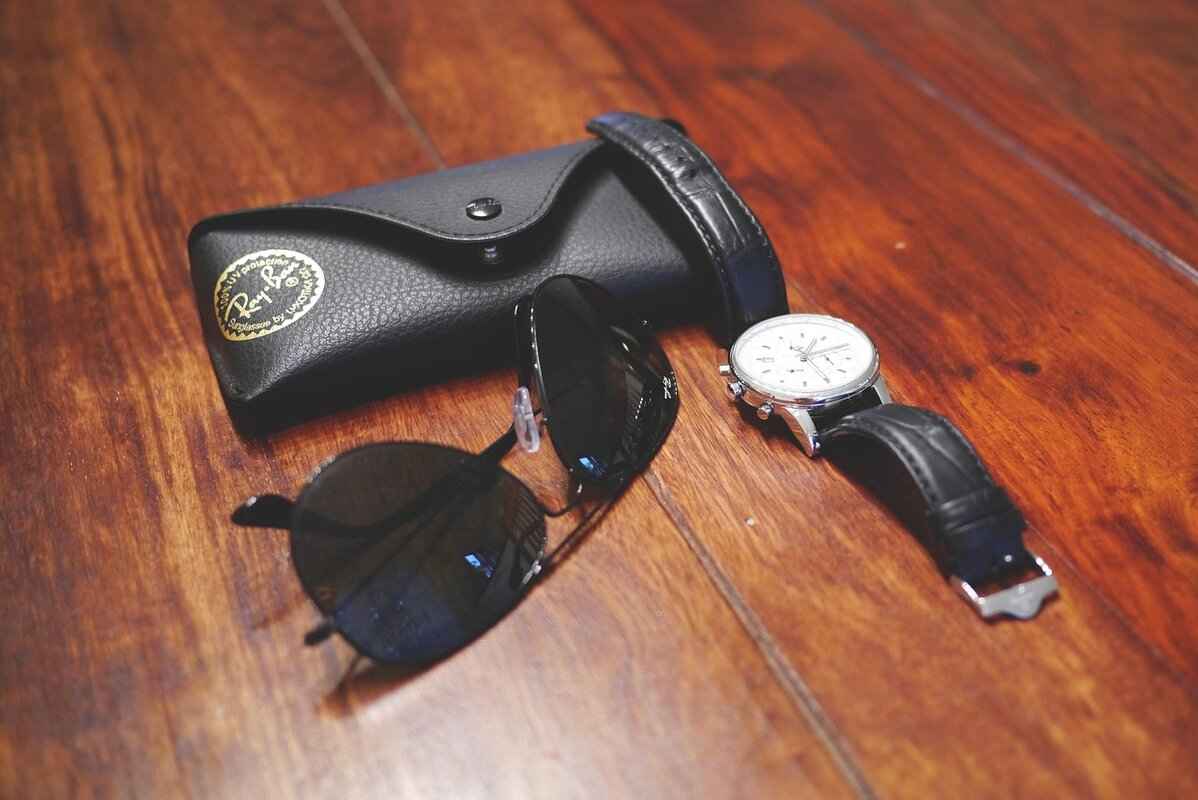
Where to Buy Quality ND Filters for GoPro Hero 12
When it comes to capturing stunning footage with your GoPro Hero 12, finding quality ND filters is essential. These filters play a vital role in enhancing the cinematic quality of your videos, allowing for better control over exposure and motion blur. Fortunately, there are numerous options available for purchasing these filters, whether you’re looking for online retailers or specialty camera stores.
With the increasing popularity of the GoPro Hero 12, many retailers have begun to stock a variety of ND filters specifically designed for this action camera. Here are some of the best places to find them:
- Online Retailers: Websites like Amazon, B&H Photo Video, and Adorama offer a wide selection of ND filters. You can easily compare prices, read customer reviews, and find filters from reputable brands.
- Camera Specialty Stores: Local camera shops often carry high-quality ND filters. Visiting these stores allows you to speak with knowledgeable staff who can provide recommendations based on your shooting needs.
- Manufacturer Websites: Brands like PolarPro, Tiffen, and Hoya have their own online stores where you can purchase filters directly. Buying from manufacturers ensures you are getting authentic products designed specifically for your camera.
- Photography Expos and Trade Shows: Attending events focused on photography and videography can provide opportunities to purchase ND filters at discounted rates. Plus, you can often find exclusive products that aren’t available in retail stores.
When searching for ND filters, it’s crucial to consider several factors to ensure you make the right choice:
- Filter Type: Decide between fixed ND filters and variable ND filters based on your shooting style. Fixed filters are great for specific lighting conditions, while variable filters offer flexibility.
- Quality and Brand Reputation: Look for filters from reputable brands. High-quality filters minimize color distortion and ensure durability, which is essential for outdoor shooting.
- Price Range: ND filters can vary significantly in price. Set a budget but remember that investing in a higher-quality filter can enhance your footage considerably.
- Compatibility: Ensure that the ND filter you choose is compatible with the GoPro Hero 12. Check the filter size before making a purchase.
Some brands have established a strong reputation for producing high-quality ND filters for GoPro cameras:
- PolarPro: Known for their premium filters, PolarPro offers a range of ND filters specifically designed for the GoPro Hero 12, ensuring optimal performance.
- Tiffen: Tiffen filters are recognized for their durability and optical quality, making them a popular choice among professional filmmakers.
- Hoya: Hoya produces a variety of filters, including ND options, that are well-regarded for their affordability and effectiveness.
In summary, finding quality ND filters for your GoPro Hero 12 is critical for achieving the best filming results. By exploring various retailers and considering essential factors such as filter type and brand reputation, you can make an informed decision that enhances your videography experience. Whether you choose to shop online or visit a local store, ensuring you have the right ND filter will elevate your footage, making it more cinematic and visually appealing.
Recommended Brands for ND Filters
When it comes to capturing stunning footage with your GoPro Hero 12, the choice of ND filters can make a significant difference. Among the myriad of options available, selecting reputable brands is crucial for reliability and performance. In this section, we will explore some of the most respected brands in the industry, focusing on their offerings for ND filters specifically designed for action cameras.
Choosing a reputable brand for your ND filters ensures that you are investing in quality products that enhance your filming experience. High-quality filters are made from advanced materials that provide clear optics, durability, and resistance to scratches. This is particularly important for action cameras like the GoPro Hero 12, which are often used in challenging environments.
PolarPro is renowned for its commitment to producing top-tier ND filters tailored for action cameras. Their filters are designed with multi-coated optical glass that minimizes reflections and enhances color fidelity. This attention to detail allows filmmakers to achieve cinematic quality in their footage. PolarPro offers a range of ND filters, including fixed and variable options, making them versatile for various shooting conditions.
Another prominent brand is Tiffen, known for its high-quality optical products. Tiffen ND filters are crafted using advanced manufacturing techniques to ensure consistent performance. Their filters are also designed to be lightweight, making them ideal for action cameras. Tiffen’s reputation for durability means that their products can withstand the rigors of outdoor filming, providing peace of mind during shoots.
Freewell has gained popularity for offering innovative ND filters at competitive prices. Their filters feature a unique magnetic design, allowing for quick and easy attachment and removal. This feature is especially beneficial for dynamic shooting environments where lighting conditions can change rapidly. Freewell’s commitment to quality ensures that their filters deliver excellent image clarity and color accuracy.
For those seeking premium quality, Moment offers a range of ND filters that are perfect for the GoPro Hero 12. Moment filters are made from high-quality glass and feature a robust design that enhances durability. Their filters are particularly favored by creatives looking to achieve specific visual styles, as they provide excellent control over exposure and motion blur.
Hoya is a well-respected name in the photography and videography world. Their ND filters are known for their reliability and performance. Hoya offers a variety of options, including both fixed and variable ND filters, catering to different shooting needs. Their filters are designed to be lightweight and easy to use, making them a favorite among GoPro enthusiasts.
When selecting an ND filter brand, consider factors such as your budget, filming style, and specific needs. Research user reviews and expert recommendations to gauge the performance and reliability of different brands. Opting for a reputable brand will not only enhance your filming experience but also ensure that your investment is worthwhile.
In summary, choosing the right ND filter brand for your GoPro Hero 12 can greatly impact the quality of your footage. Brands like PolarPro, Tiffen, Freewell, Moment, and Hoya offer a variety of options that cater to different needs and budgets. By investing in high-quality ND filters, you can elevate your filming experience and achieve stunning cinematic results.
Price Range for ND Filters
When it comes to enhancing your GoPro Hero 12 filming experience, understanding the is crucial. These filters are an essential tool for achieving cinematic quality, but their prices can vary significantly based on several factors. By familiarizing yourself with the different price points, you can make an informed decision that aligns with your budget and specific filming needs.
The price of ND filters is influenced by various factors, including:
- Brand Reputation: Well-known brands often charge more due to their established quality and reliability.
- Type of Filter: Fixed ND filters are generally less expensive than variable ND filters, which offer more versatility.
- Material Quality: Higher-quality optical glass tends to cost more but results in better image quality.
- Filter Size: Larger filters may come with a higher price tag, especially for specialized applications.
Understanding the typical price ranges can help you navigate your options:
| Type of ND Filter | Price Range |
|---|---|
| Fixed ND Filters | $15 – $50 |
| Variable ND Filters | $40 – $150 |
| Graduated ND Filters | $30 – $100 |
When selecting an ND filter, consider the following:
- Assess Your Needs: Determine the type of shooting environments you will be in and what level of light reduction is necessary.
- Balance Quality and Cost: While it may be tempting to go for the cheapest option, investing in a reputable brand can save you from poor performance.
- Look for Sales and Discounts: Many retailers offer seasonal sales that can significantly reduce the cost of high-quality filters.
Finding the right ND filter at a reasonable price can be achieved through:
- Online Retailers: Websites like Amazon and B&H Photo often have a wide selection and competitive pricing.
- Camera Specialty Stores: Visiting local camera shops can provide opportunities to ask questions and get recommendations.
- Second-Hand Markets: Platforms like eBay or Facebook Marketplace may offer gently used filters at a fraction of the retail price.
In summary, understanding the is essential for making an informed decision that meets your filming requirements and budget. By considering factors such as brand, type, and material quality, you can find a filter that enhances your GoPro Hero 12 footage without breaking the bank. Whether you opt for a fixed, variable, or graduated ND filter, investing in the right tools will enable you to capture stunning cinematic shots.
Frequently Asked Questions
- What are ND filters and why do I need them for my GoPro Hero 12?
ND filters, or neutral density filters, are essential tools that reduce the amount of light entering your camera lens. This allows you to control exposure and motion blur, crucial for achieving that cinematic quality in your GoPro Hero 12 footage. Think of them as sunglasses for your camera!
- How do I choose the right ND filter for my filming conditions?
Choosing the right ND filter depends on various factors like lighting conditions and your desired effects. For bright sunny days, a stronger ND filter might be needed, while for overcast days, a lighter one could suffice. It’s all about finding that perfect balance for your creative vision!
- Can I use multiple ND filters together?
Yes, you can stack ND filters, but be cautious! Stacking can lead to vignetting or reduced image quality. It’s best to test and see how your footage turns out with different combinations before committing to a final setup.
- Are there specific brands you recommend for ND filters?
Absolutely! Brands like PolarPro and Tiffen are well-known for their high-quality ND filters designed specifically for action cameras, ensuring you get the best performance and durability for your GoPro Hero 12.
- How do I set up my GoPro Hero 12 with an ND filter?
Setting up your GoPro with an ND filter is simple. Just attach the filter securely to the lens, adjust your camera settings for optimal exposure, and start experimenting with different filters to see which one works best for your shooting scenario!

